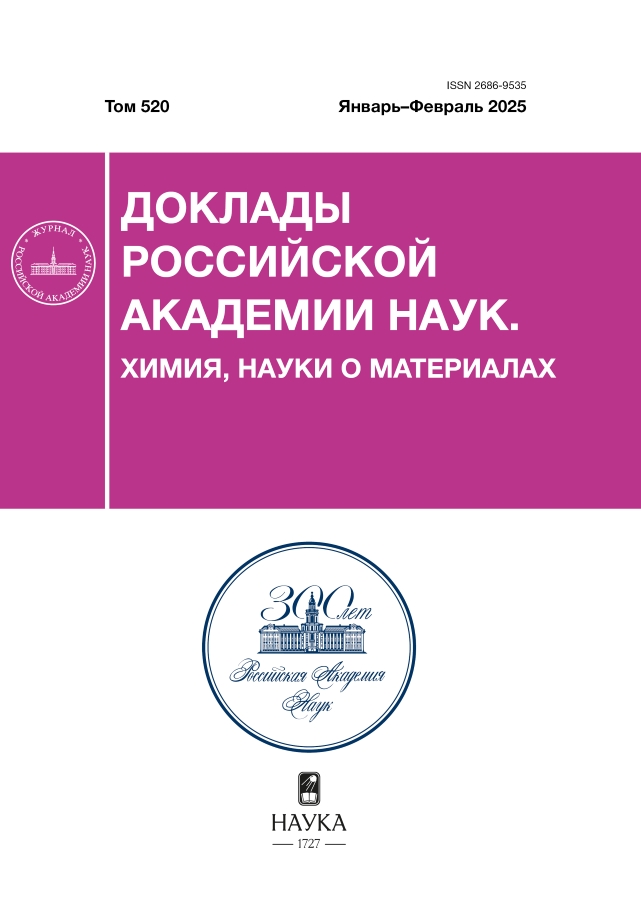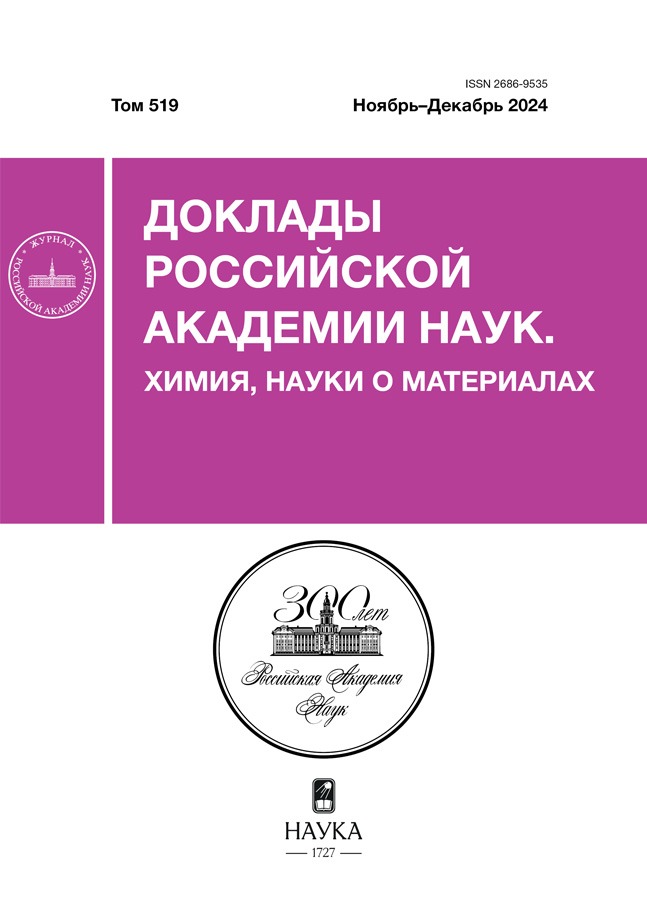Fuzzy-Interval Model of Forest Biomass Changes under the Influence of Technogenic Chemical Pollutants under Conditions of Uncertainty
- Authors: Meshalkin V.P.1,2, Butusov O.B.1,2, Kantyukov R.R.3, Chistyakova T.B.4
-
Affiliations:
- Dmitry Mendeleyev University of Chemical Technology of Russia
- Frumkin Institute of Physical Chemistry and Electrochemistry, Russian Academy of Sciences
- ООО “Gazprom VNIIGAZ”
- Saint Petersburg State Technological Institute (Technical University)
- Issue: Vol 519, No 1 (2024)
- Pages: 11-16
- Section: CHEMICAL TECHNOLOGY
- URL: https://permmedjournal.ru/2686-9535/article/view/682477
- DOI: https://doi.org/10.31857/S2686953524060022
- EDN: https://elibrary.ru/BOYKJY
- ID: 682477
Cite item
Abstract
An original fuzzy-interval model of forest biomass change processes under the influence of technogenic chemical pollution under conditions of uncertainty of forest biomass state parameters is proposed. It is distinguished by the use of virtual positive and negative forest biomass flows with fuzzy values of forest biomass density and consumption parameters under the influence of chemical pollution, as well as operations of transforming initial differential equations with uncertain variables into interval equations with triangular fuzzy numbers (TFN), which allows, under conditions of fuzzy information about the biomass state, to calculate the boundaries of the impact and buffer zones of ecological zoning of forest areas under the influence of chemical pollution.
About the authors
V. P. Meshalkin
Dmitry Mendeleyev University of Chemical Technology of Russia; Frumkin Institute of Physical Chemistry and Electrochemistry, Russian Academy of Sciences
Email: butusov-1@mail.ru
Academician of the RAS
Russian Federation, 125047 Moscow; 119071 MoscowO. B. Butusov
Dmitry Mendeleyev University of Chemical Technology of Russia; Frumkin Institute of Physical Chemistry and Electrochemistry, Russian Academy of Sciences
Author for correspondence.
Email: butusov-1@mail.ru
Russian Federation, 125047 Moscow; 119071 Moscow
R. R. Kantyukov
ООО “Gazprom VNIIGAZ”
Email: butusov-1@mail.ru
Russian Federation, 142717 Moscow
T. B. Chistyakova
Saint Petersburg State Technological Institute (Technical University)
Email: butusov-1@mail.ru
Russian Federation, 190013 Saint Petersburg
References
- Meshalkin V.P., Dovì V.G., Bobkov V.I. Belyakov A.V., Butusov O.B., Garabadzhiu A.V., Burukhina T.F., Khodchenko S.M. // Mendeleev Commun. 2021. V. 31. № 5. P. 593–604. https://doi.org/10.1016/j.mencom.2021.09.003
- Мешалкин В.П. Экспертные системы в химической технологии. Основы теории, опыт разработки и применения. М.: Химия, 1995. 368 с. ISBN 5-7245-0974-1
- Мешалкин В.П. Основы интенсификации и ресурсоэнергоэффективности химико-технологических систем. Смоленск: ООО “Принт-экспресс”, 2021. 442 с.
- Бузник В.М. Химия. Устойчивое развитие. Высокотехнологичный бизнес. Владивосток: Дальнаука, 2002. 200 с.
- Защиринский С.В., Фураев Д.Н., Чистякова Т.Б. // Автоматизация в промышленности. 2018. № 11. С. 28–32.
- Bolshakov A., Sgibnev A., Glazkov V., Lachugin D., Chistyakova T. Volumetric display testing unit for visualization and dispatching applications In: Interactive collaborative robotics. Ronzhin A., Rigoll G., Meshcheryakov R. (eds.). ICR 2016. Lect. Notes Comput. Sci. V. 9812. Springer, Cham, 2016. P. 234–242. https://doi.org/10.1007/978-3-319-43955-6_28
- Bojadziev G., Bojadziev M. Fuzzy logic for business, finance and management. USA, Danvers: World Scientific Publishing, 2007. 232 p.
- Pedro F.S., de Barros L.C., Gomes L.T. A Survey on fuzzy differences. In: Proc. of the 16th World Congress of the International Fuzzy Systems Association (IFSA), 9th Conference of the European Society for Fuzzy Logic and Technology. 2015. EUSFLAT. P. 705–710. https://doi.org/10.2991/ifsa-eusflat-15.2015.100
- Bede B., Stefanini L. Numerical solution of interval differential equations with generalized Hukuhara differentiability. In: Proc. of the Joint 2009 International Fuzzy Systems Association World Congress and European Society of Fuzzy Logic and Technology Conference (July 20–24, 2009, Lisbon, Portugal). IFSA/EUSFLAT. 2009. P. 730–735.
- Ahmad M.Z., Hasan M.K. Numerical methods for fuzzy initial value problems under different types of interpretation: A comparison study. In: Informatics engineering and information science. ICIEIS 2011. Communications in computer and information science. Abd Manaf A., Zeki A., Zamani M., Chuprat S., El-Qawasmeh E. (eds.). V. 252. Part II. Springer, Berlin, Heidelberg. pp. 275–288. https://doi.org/10.1007/978-3-642-25453-6_25
- Chakraverty S., Tapasvini S., Diptyranjan B. Fuzzy differential equations and application for engineers and scientists. Boca Raton, London, New York: CRC Press, Taylor and Francis Group, 2017. 216 p. https://doi.org/10.1201/9781315372853
- Kumaresan N., Kavikumar J., Ratnavelu K. // Int. J. Math. Comput. Sci. 2012. V. 6. P. 453–456.
- Gomes L.T., de Barros L.C., Bede B. Fuzzy differential equations in various approaches. Heidelberg, New York, Dordrecht London: Springer International Publishing, 2015. 130 p. https://doi.org/10.1007/978-3-319-22575-3
- Najafi H.S., Sasemasi F.R., Roudkoli S.S., Nodehi S.F. // J. Math. Comput. Sci. 2011. V. 2. № 2. P. 295–306.
- Мешалкин В.П., Бобков В.И., Борисов В.В., Дли М.И. // Доклады Российской академии наук. Химия, науки о материалах. 2020. Т. 494. № 1. С. 50–54. https://doi.org/10.31857/S2686953520050167
- Dias M.R.B., Barros L.C. Differential equations based on fuzzy rules. In: Proc. of the Joint 2009 International fuzzy systems association world congress and European society of fuzzy logic and technology conference. V. 1. (July 20–24, 2009, Lisbon, Portugal), 2009. pp. 240–246.
- Murray J.D. Mathematical biology. Third edition. Berlin: Heidelberg: Springer-Verlag, 2002. 576 p.
- Smith W.H. Air Pollution and forests. Interactions between air contaminants and forest ecosystems. New York: Springer-Verlag, 1981. 388 p.
Supplementary files











